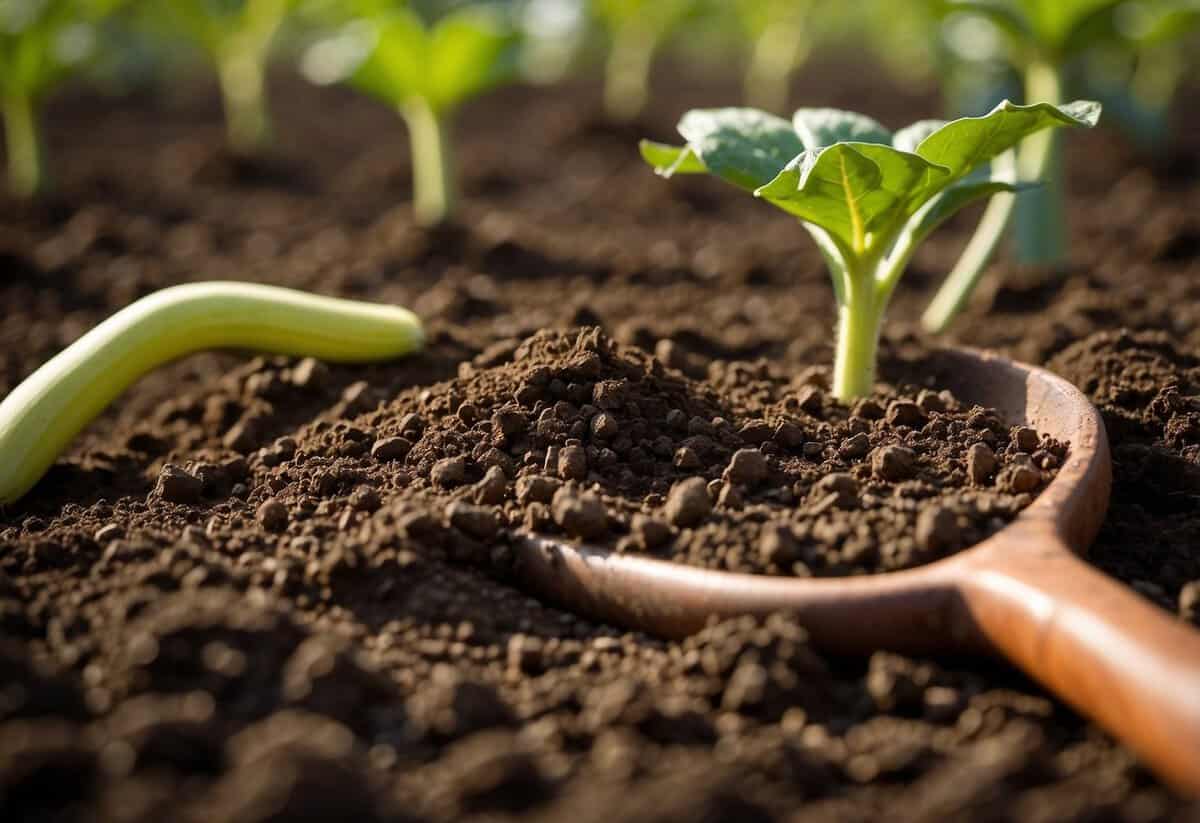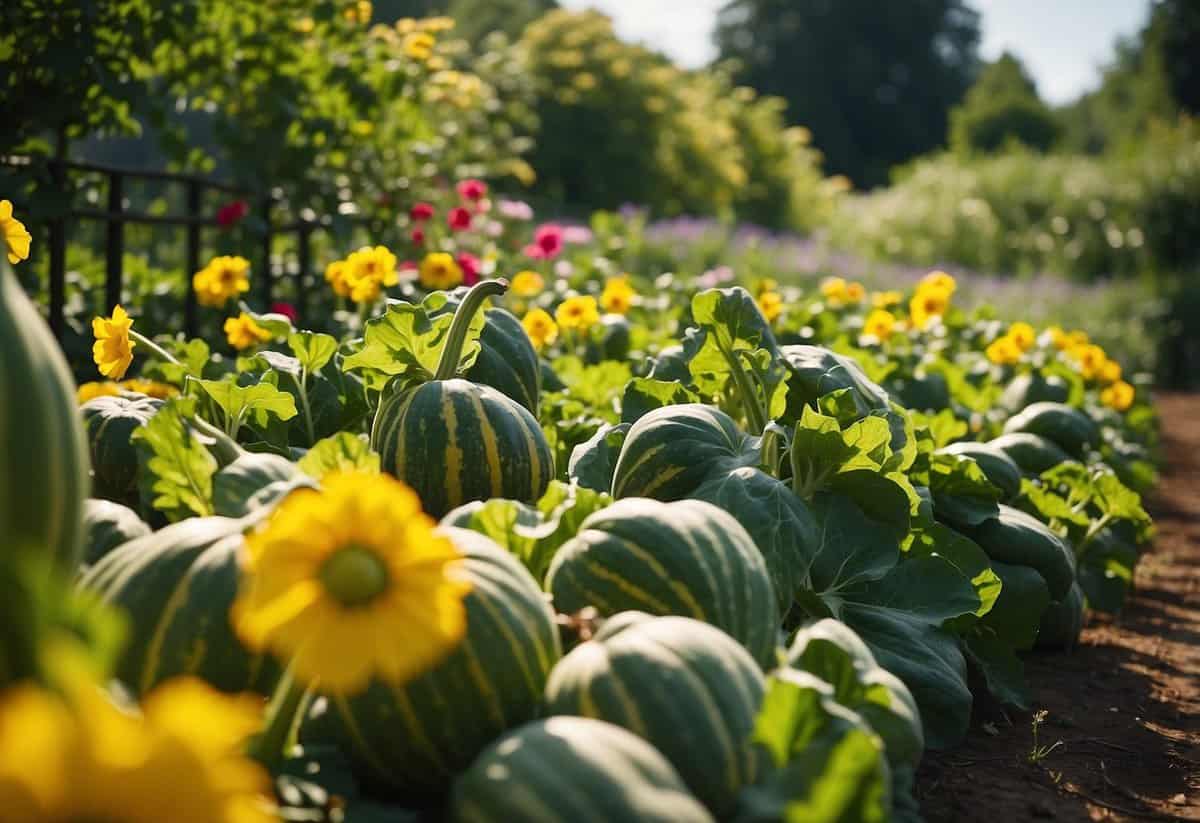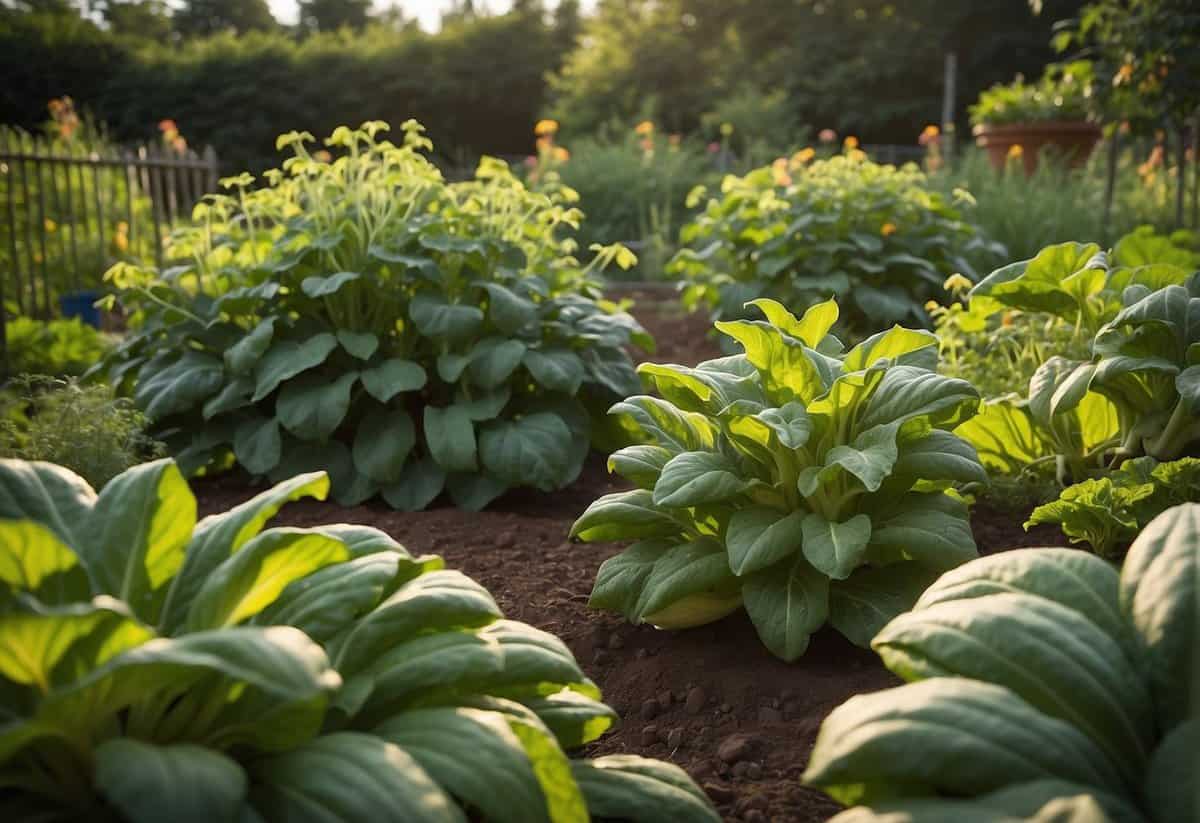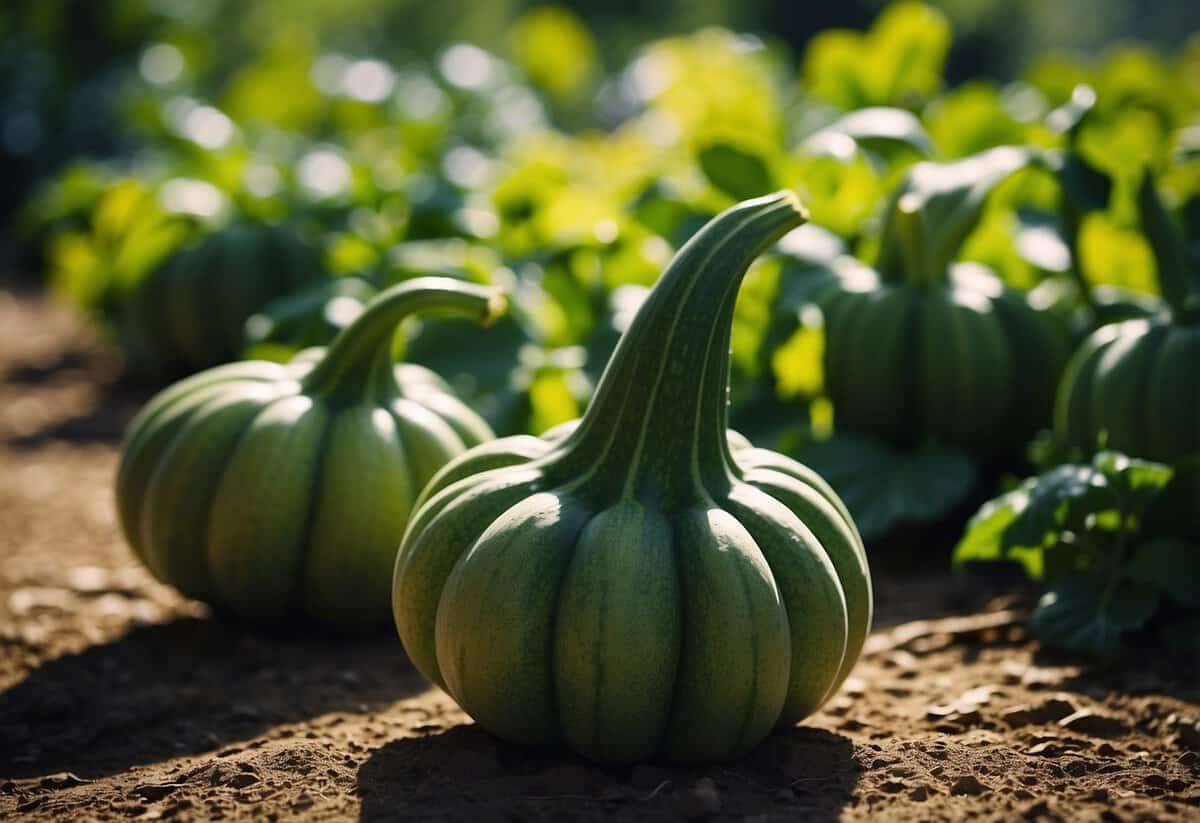Summer Squash Garden Tips: Easy Ways to Boost Your Harvest
Growing summer squash can be a fun and rewarding addition to your gardening activities. Whether you’re a seasoned gardener or just starting out, summer squash offers a bountiful harvest with minimal fuss. With a few helpful tips, you can enjoy delicious and nutritious squash throughout the season.

Caring for your summer squash plants involves understanding their needs and providing the right conditions. How can you ensure a healthy and fruitful summer squash garden? By following some tried-and-true techniques, you can cultivate a thriving garden filled with vibrant and tasty squash.
1) Choose a Sunny Spot

Your summer squash will thrive best in a sunny location. A spot that gets at least 6 to 8 hours of direct sunlight each day is ideal.
Squash plants love warmth and sunlight, so pick an area that’s not shaded by trees or buildings. This will help the plants grow strong and healthy.
Make sure the soil is well-drained where you plant your squash. This helps prevent water from pooling around the roots. For more information, check out these tips for growing summer squash.
2) Test and Prepare the Soil

To grow healthy summer squash, start by testing your soil. Use a soil testing kit to check the pH and nutrient levels. Aim for a pH between 6.0 and 6.8.
Mix in well-aged compost to enrich the soil with nutrients. Compost can help improve soil texture and drainage. You want about 30% compost mixed in for optimal growth.
Adding some well-rotted manure before planting can also boost soil fertility. Make sure to work it into the soil well. If your soil is heavy or clay-like, adding organic matter will help lighten it up.
3) Select the Right Varieties

Choosing the right summer squash varieties for your garden is key. Look for types that grow well in your region. For instance, Golden Egg squash is an early-maturing, bright yellow variety with a sweet flavor.
Consider trying Zephyr squash if you want a mix of two colors and excellent productivity. If you enjoy bumpy textures, the classic Yellow Crookneck might be a great choice. It’s a favorite among gardeners and has a long harvest period.
4) Plant at Appropriate Times

Timing is key when planting summer squash. You’ll want to sow seeds directly into the garden after the last frost has passed. This is when the soil is warm enough, usually when temperatures stay above 60°F.
For those using transplants, handle them carefully to avoid damaging the roots. If starting seeds indoors, plant them 2-3 weeks before the last expected frost. This will give the seedlings a head start, allowing them to be sturdy enough to transplant into your garden when the weather is right. For more timing tips, check out these growing tips from Growing In The Garden.
5) Use Quality Seeds

Quality seeds are the foundation of a successful garden. Choose reputable seed suppliers to ensure you start with the best possible stock.
Check the seed packet for the harvest date. Fresh seeds have higher germination rates. This helps your summer squash grow strong and healthy.
Look for seeds labeled as disease-resistant. These seeds can better withstand common plant illnesses, saving you time and trouble.
6) Monitor Watering Needs

Summer squash needs consistent watering. Water your plants deeply, soaking the soil up to 4 inches down. Use a moisture gauge to check the soil when it feels dry.
Watch for wilting leaves. Drooping may mean too little or too much water. Adjust your watering schedule based on these signs to keep your plants healthy.
Mulch helps retain moisture. Organic mulch like straw or compost can keep the soil moist and reduce the need for frequent watering.
7) Mulch to Retain Moisture

Using mulch in your garden helps keep the soil moist. It reduces evaporation, which means you won’t have to water as often.
Good options include straw, compost, leaves, and wood chips. They all work well to trap moisture in the soil. This also helps in preventing weeds.
Organic mulch can be a fantastic choice for summer squash. It not only keeps the soil damp but also adds nutrients. Try layering it around your plants for the best results.
8) Fertilize Appropriately

Your summer squash plants need nutrients to thrive. Create shallow trenches around the base, a few inches from the stem.
Side dress them with 1/2 cup of 10-10-10 fertilizer once the fruits start to grow.
Make sure to fertilize your vine squash just before the runners spread to encourage healthy growth. More on fertilizing squash.
9) Watch for Pests

Keep an eye out for pests in your garden. One to watch for is the squash vine borer, which lays eggs around the stem. These pests can cause severe damage to your plants.
Look for eggs on stems and leaves. Removing these early can save your plants from harm.
Use barriers like row covers to keep pests away. Regularly check your plants to catch any new infestations.
Learn more about common pests and how to manage them from this helpful guide. Regular monitoring helps keep your summer squash healthy and thriving.
10) Harvest Regularly

You should pick your summer squash often to keep them producing. When the plants are regularly harvested, they tend to yield more fruit.
The best size to pick summer squash is when they reach about 6-8 inches long. This size ensures they are tender and tasty.
Be gentle while harvesting. Use a sharp knife or garden pruner to cut the squash, leaving a small stem attached. Avoid tugging to prevent damage to the plant.
Choosing the Right Varieties

Picking the best summer squash for your garden can make a big difference in your harvest. You’ll want to consider the different types and whether heirloom or hybrid varieties suit your needs.
Differences Between Summer Squash Types
Summer squash comes in many shapes and sizes. Some common varieties include zucchini, crookneck, pattypan, and straightneck. For example, zucchini is a popular choice, and you can find many types, like green and gray varieties. The grey zucchini has a mild flavor and firm flesh, ideal for many recipes.
Crookneck squash is another favorite. It has a slightly curved neck and bumpy skin. The Yellow Crookneck type takes longer to mature but has a long harvest period once it starts fruiting.
Pattypan squash has a unique shape that looks like a flying saucer. They are usually small and several colors, including green, yellow, and white.
When choosing your variety, think about what recipes you enjoy and how much space you have.
Heirloom vs Hybrid Varieties
Heirloom varieties are traditional types passed down through generations. They often have unique flavors and colors. They also produce seeds you can save and plant next year. Heirlooms are excellent if you want vegetables with a rich history and distinctive taste.
Hybrid varieties are bred for specific traits like disease resistance, uniformity, and higher yield. An example is the ‘Golden Egg’ summer squash. This hybrid is early-maturing, prolific, and has a sweet, nutty flavor.
Choosing between heirloom and hybrid depends on your preferences. If you’re looking for history and unique taste, heirlooms are your best bet. If you prefer higher productivity and specific traits, go with hybrids.
Planting Tips

Successful summer squash growth involves proper soil preparation and correct planting depth and spacing. These factors are key to a thriving garden.
Soil Preparation
Start by choosing a sunny spot since summer squash needs plenty of light. The soil should be well-draining and rich in organic matter. You can improve the soil by adding compost or well-rotted manure, which provides nutrients and helps retain moisture.
Check the soil pH; it should be between 6.0 and 7.5. You can test your soil with a home test kit. If the pH is too low, adding lime can help. If it’s too high, sulfur can bring it down. Aim for a loose, crumbly texture that roots can easily penetrate.
Planting Depth and Spacing
For direct sowing, plant the seeds about 1 inch deep. If you’re using transplants, make sure they’re at the same depth as they were in their pots to avoid stressing the plants. Space the seeds or plants 2 to 3 feet apart in all directions.
If you’re growing summer squash in containers, choose a pot that’s at least 1 foot wide and deep. Use a potting mix rich in organic matter and plant 2-3 seeds or one transplant per container. This provides enough space for the roots to grow well. If you follow these steps, your summer squash should thrive.
Maintenance and Care

Taking proper care of your summer squash involves ensuring they get enough water and nutrients. This helps them grow healthy and produce lots of tasty squash for you to enjoy.
Watering Requirements
Summer squash plants need regular and thorough watering. As they grow larger, their water needs increase. Keep the soil moist but not soggy. Aim to water deeply so that moisture reaches about 4 inches down. This typically means watering when the soil begins to dry out at the surface.
To avoid leaf burn, water at the base of the plants early in the morning. If you must water during the day, use a soaker hose to keep the leaves dry. This is important because wet leaves in hot sun can stress the plants.
Using a moisture gauge can help you make sure you’re watering just the right amount. Consistent watering ensures your summer squash stays healthy and productive.
Fertilizing Schedule
Feeding your summer squash with nutrients helps them grow strong. Mix in well-aged compost when preparing the soil, aiming for a compost-to-soil ratio of about 30%. This enriches the soil and promotes healthy seedling growth.
Fertilize your plants every few weeks. A balanced fertilizer with equal parts nitrogen, phosphorus, and potassium works well. Apply the fertilizer according to the package instructions, being careful not to over-fertilize, which can damage the plants.
Organic options like fish emulsion or compost tea can also be effective. They provide nutrients without the risk of chemical buildup. Regular feeding will keep your summer squash thriving and productive throughout the growing season.







